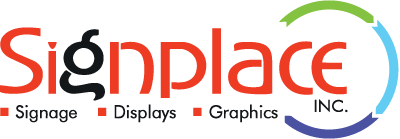plant assets refer to nonphysical assets that are used in the operations of a business 5
ACCT 201 Chapter 8 Key Terms UTAMA MANAGEMENT SERVICES- Daftar Lesen CIDB MOF
This is the amount the owner expects to receive from disposing of the asset at the end of its benefit period. If the asset is expected to be traded in on a new asset, its salvage value is the expected trade-in value. The phrase Capital-Intensive Companies refers to companies with large amounts invested in plant assets.
Plant assets are used in operations and have useful lives that extend over more than one accounting period.
- Depreciation also impacts the income statement, where the depreciation expense for the period is recorded, reducing the company’s reported net income.
- They are usually land and building, plant and machinery that may be fixed or movable, or any other equipment that can be categorized as the same.
- Plant assets form the physical backbone of a business, enabling its core operations and production capabilities.
- In most cases, companies will list their net PP&E on their balance sheet when reporting financial results, so the calculation has already been done.
- Current assets and plant assets represent two distinct types of assets on a company’s balance sheet, each serving different financial and operational roles.
- Plant assets are recorded at their acquisition cost and adjusted for accumulated depreciation over time, which helps reflect their true, declining value due to wear and tear.
Process of allocating the cost of a plant asset to expense in the accounting period benefiting from its use. As time goes on, plant assets wear down and must be replaced, although most companies try to extend useful life for as long as possible. As such, these assets provide an economic benefit for a significant period of time. In most cases, companies will plant assets refer to nonphysical assets that are used in the operations of a business. list their net PP&E on their balance sheet when reporting financial results, so the calculation has already been done. However, a more realistic figure for cost of equipment results if the plant asset account is charged for overhead applied on the same basis and at the same rate as used for production. Some accountants treat all cash discounts as financial or other revenue, regardless of whether they arise from the payment of invoices for merchandise or plant assets.
If land is purchased as a building site,the cost of removing existing structures is not charged to the Land account.
- This process matches the expense of using the asset with the revenue it helps generate over multiple periods.
- Plant assets are also long-term, expected to provide economic benefits for more than one accounting period, typically exceeding one year.
- Intangible assets have no physical characteristics that we can see and touch but represent exclusive privileges and rights to their owners.
- As such it may be viewed as an extraordinary repair and charged against the accumulated depreciation on the truck.
Depreciation is the process by which a plant asset experiences wear and tear over a particular period of time. Most plant assets, except for land, are subject to depreciation because their usefulness diminishes over time. A common method, straight-line depreciation, spreads the asset’s cost evenly across its estimated useful life. These assets are held for use in producing goods or services, for rental to others, or for administrative purposes, rather than being held for sale. Examples include land, buildings, machinery, equipment, vehicles, and office furniture. Unlike inventory, which is held for immediate sale, or short-term investments, plant assets are foundational to a business’s ongoing operations.
It involves systematically allocating the asset’s cost over its estimated useful life rather than expensing the full cost in the year of purchase. This process matches the expense of using the asset with the revenue it helps generate over multiple periods. The Internal Revenue Service (IRS) provides guidance on useful lives for various asset classes for tax purposes. Understanding plant assets is clearer when distinguishing them from other asset categories.
They are recorded at cost and are depreciated over the estimated useful life, or the actual useful life, whichever is lower. Noncurrent assets are a company’s long-term investments for which the full value will not be realized within a year and are typically highly illiquid. A fixed asset is a long-term tangible asset that a firm owns and uses to produce income and is not expected to be used or sold within a year. Accounts receivable consist of the expected payments from customers to be collected within one year. PP&E are assets that are expected to generate economic benefits and contribute to revenue for many years.
Obsolescence refers to the insufficient capacity of a company’s plant assets to meet the company’s growing productive demands. The plant assets classification isn’t used, having been superseded by such other asset classifications as Buildings and Equipment. Like any category of assets, it’s critical to evaluate plant assets on a company-by-company basis. Noncurrent assets are company investments that are expected to be held or used for many years. Plant assets are a fundamental component of a business’s operational capacity and financial health. This article explores the nature of plant assets and their accounting treatment, providing insights into their significance for businesses.
As non-current assets, plant assets play a continuous role in operations, with their value recorded at historical cost, less accumulated depreciation. This categorization provides clarity in financial reporting, showing stakeholders the long-term resources a business relies on to maintain and grow its operations. They are thought of to be noncurrent belongings as a result of they provide value to an organization but cannot be readily converted to cash inside a yr.

Leave a Comment